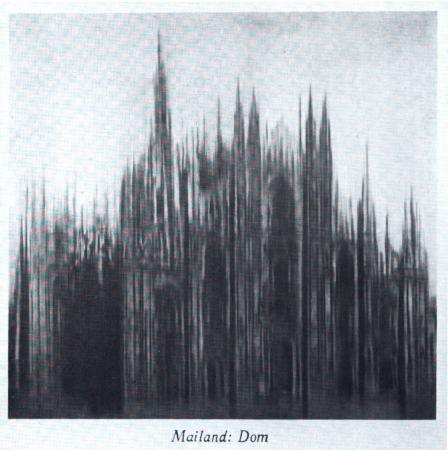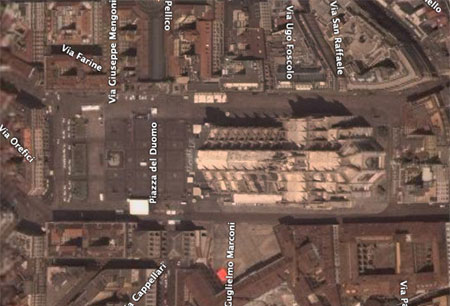The first two weeks of my September were spent in the Faroe Islands. Eighteen islands, 48,000 people, and countless sheep comprise the Faroe Islands, a self-governing Danish colony that’s about halfway between the northern tip of Scotland and Iceland. Not a lot of tourists visit: it’s windy and cold most of the year, though it’s beautiful in its way. A beauty of constraint: there aren’t a lot of things to be found in the Faroe Islands. There are a lot of puffins if you’re interested in sea birds, though by September they’ve left the cliffs where they nest. (Even so, the islands are not without them: the Faroese industriously eat all those that they can catch, and no Faroese dwelling is free of a stuffed puffin.) There are plenty of sheep. There are plenty of hills to climb (there are sheep above as below); there are little waterfalls everywhere to admire. For all of this, the Faroe Islands aren’t really a place Americans think about. The CIA’s World Factbook page on the country declares that there are “no roads between towns”; the photos in Google Maps don’t get close enough to demonstrate that this isn’t actually true. The possibility of offshore oil would doubtless bring international attention to the isle, but the results are thus far inconclusive. For now, the visitor can browse the country’s one mall, or stand on the beaches hoping that there will be a whale drive: the Faroese are perhaps best known internationally for their bloody pilot whale hunts.
There was not a whale drive while we were there, alas, though we picked up a little book in English entitled HNJ’s Indispensable Guide to the Faroe Islands: Pilot Whales and the Whale Drive that illustrates them in astonishingly graphic detail, and explains their importance to Faroese economy and society in an endearingly earnest tone. We stayed in a little house (with a sod roof – nothing but the best for tourists) in the village of Kvívík, a house with no telephone, much less Internet. It did have a television, though there’s only one Faroese television station, and it only broadcasts six hours a day, mostly English programs subtitled in Danish. (It did come equipped with the one Faroese movie, Barbara, a nineteenth century morality tale involving a well-meaning minister, adultery, and high winds.) Leaving the house, you can take buses from town to town, and ferries from island to island, but to the uneducated observer, there’s not much distinguishing one Faroe from another: it’s all generically beautiful. Some towns have gas stations, and at the gas stations you can buy hot dogs. There aren’t really any restaurants save in Torshávn, the capital city. On days when it’s too rainy to hike along the sea cliffs, it’s comfortable staying home knowing there really isn’t anything better you could be doing. It’s a good place to catch up on your reading.
Cut off from the world in the Faroes, I found myself thinking about islands, thoughts sustained by a stopover in Reykjavík on the way back to New York. In the Public Library, I dug up a copy of Letters from Iceland, an unruly collection of travel writing about that country put together by W. H. Auden & Louis MacNeise in 1937. In a poem addressed to Christopher Isherwood, Auden explains the pull of islands:
For Europe is absent. This is an island and therefore
Unreal.
It’s not entirely accurate to suggest that my trip through the islands of the North Atlantic was a departure from my normal relation to islands: in my daily life, I cycle between Long Island and Manhattan, rarely if ever touching the mainland United States. Maybe it’s not by accident that the Institute’s physical locations are island-based, Long Island and Great Britain, both of whose names suggest they’re perhaps overreaching their status. But the islands of New York don’t feel like islands. Staten Island, the part of the city that’s most self-declaredly an island, feels the least like an island and the most like New Jersey. Elizabeth Bishop’s rescued “Crusoe in England” ponders the issue:
Now I live here, another island,
that doesn’t seem like one, but who decides?
My blood was full of them; my brain
bred islands. But that archipelago
has petered out.
The island – more precisely, the idea of an island, unreal as it might be – is evocative. Islands present themselves as bounded, finite spaces: we can imagine that we can see all of an island, understand all of an island in the way that we know we can’t understand the unbounded space of a continent. Islands are made of the same earth as continents, but we know where an island stops; there’s something comforting in that. This sense of boundary is ultimately illusory, something that becomes obvious when we look at our home islands. Manhattan is an island with a fixed area, but we can’t imagine grasping all of it at once. It’s too messy to feel like an island.
John Donne’s “no man is an island” can’t be escaped: it resonates as a statement because it’s something we need to be told. We’re predisposed to believe the opposite, that we are all islands. Our brains breed islands: there’s a strong impulse to see people and things as discrete and distinct: perhaps they’re easier to understand. Books play into this, of course: historically, we’ve seen books as isolated objects, worlds in and of themselves. In a critical sense, the highwater mark of this might be said to be the New Critics, who argued that nothing outside the book mattered when thinking about the book. The academy’s generally embarrassed about this idea now, but there’s still a strong pull to the idea: witness recent discussions about whether or not J. K. Rowling’s outing of Dumbledore actually makes him gay in the Harry Potter books. Our personal relationship with books also plays into this: we imagine that when we’re reading we’re in some other space, in temporary isolation.
Alfred Russel Wallace, wandering the Malay Archipelago in the 1850s, was probably the first to realize the importance of islands in evolution. Islands, it turns out, are extremely interesting if you’re trying to figure out the origin of species; Darwin would figure this out as well when he toured the Galápagos. Because of their bounded nature, islands tend to have distinct populations; in archipelagos, the observant naturalist will notice differences between even nearby islands. Wondering why these differences can be so pronounced follows on; what came to be known as biogeography was something that preoccupied Wallace throughout his career, culminating with the 1880 publication of Island Life, he continued to work out the ways in which geography affects biology.
Modern population genetics explains statistically why islands are important in evolution. Isolation doesn’t have to be from islands, but that helps reduce gene flow between different populations. Because of this, island populations tend to have smaller gene pools than non-isolated populations. One of the ways this impacts island populations is “founder’s effect”: the quirks found in the founding population of an island will be magnified over time. Imagine that there’s an island unpopulated by lemmings; a raft of lemmings from the continent runs aground one day, and the lemmings start overrunning the island. Continental lemmings might have eyes that are red, blue, green, or yellow with a certain distribution (say 75% red, 10% blue, 10% green, and 5% yellow); however, if the founding population of lemmings is only 6, this distribution can’t be accurately represented. You might have 3 red-eyed lemmings, 1 blue-eyed lemming, and 2 green-eyed lemmings. None of the descendents of these lemmings will have yellow eyes; there will probably be more green-eyed lemmings than you’d expect from looking at continental lemmings.
Another reason that islands are important is genetic drift. Because of the smaller gene pool, isolated populations are more vulnerable to changes in the frequency of alleles. A new mutation that appears in a population of a million has an infinitesimal chance of becoming prevalent in the majority of the population; a new mutation that appears in a population of ten still only has a tiny chance of spreading to the majority, but it’s a better chance than the allele would have had in a population of a million. If, randomly, a lemming is born with purple eyes in a tiny island population, there’s a small chance that given time purple eyes might spread through the population; in ten years, there’s a chance (smaller still) that all the lemmings on that island might have purple eyes.
This model for how isolated populations change genetically over time seems to hold true for human languages: the Faroese speak their own derivative of Old Norse, more closely related to Icelandic than any other existing language. Similarly, we can imagine (if speculatively) that the population genetics model applied to the history of culture. Even before population genetics came along, there was the recognition that islands are where things can happen: given time and isolation, new ideas can germinate and bear fruit. One remembers that Thomas More’s Utopia was created when the founder King Utopus commanded a fifteen-mile trench to be dug, transforming a peninsula into an island. Island-bound, it was harder to distract his revolution: “Insomuch that the borderers, which at the first began to mock, and to jest at this vain enterprise, then turned their laughter to marvel at the success, and to fear.” (See also: Cuba, Haiti.)
There’s an argument – more speculative, to be sure – to be made that this sort of selection pressure also happens culturally. Consider the evolution of pop music, which seems tied to islands. Jamaica’s probably the best example of this in the past half-century or so. Iceland’s proud of functioning as an incubator for new music: Björk’s first record in on view in the national museum. Henry Adams, the most continental of all Americans, observed that England was a place where “eccentricity was so general as to become hereditary distinction,” a remark that could be applied to the bands that have sprung up in Björk’s wake. A visit to the record shops of Reykjavík turns up those that have made it out into the wider world (Sigur Rós, Múm, Gus Gus) and those that haven’t yet (the Apparat Organ Quartet, Trabant, Ultra Mega Technobandið Stefán). One also notices that what sells in Icelandic record shops is weird: in September, Faroese crooner Eivør Pálsdóttir was on top of the Icelandic charts. Further scrutiny revealed that Faroese bands seem to sell briskly in Iceland.
Why is Icelandic pop so strange? The answer probably has to do with size, and the increased possibility of big waves in a smaller country: in a country of 300,000 people, it doesn’t take a huge effort to make a splash. If you sell 3000 records, 1% of the total population has your record. If you sell 3000 records in a country of 300,000,000, 1/1000 of 1% of the total population has heard your record. Small populations can change much more quickly. Had they sprung up in New York, Sigur Rós’s cetacean bellowings might have become a cult favorite at a downtown club; in Iceland, they became the country’s best-selling group.
An analogue to this might be found in Harold Bloom’s idea of “misprision”, his argument that writers often creatively misread. A good example: Hugh Kenner argues (in The Pound Era) that Joyce has Stephen Daedelus living in the martello tower at the start of Ulysses because he was working from Samuel Butler’s rather questionable translation of The Odyssey, which had Telemachus living in a tower. Had Joyce’s writing been part of a broader community, somebody would probably have pointed out to him that Telemachus isn’t living in a tower in any other Odyssey. But, Kenner argues, Joyce was writing in isolation and free to make mistakes, mistakes that wound up being creatively useful.
Back to Elizabeth Bishop: “Crusoe in England” catches up with Defoe’s character after he’s been rescued from his island; paradoxically, he’s more isolated than ever. The details that gave meaning to life then lose significance in the broader context he finds himself in:
The knife there on the shelf
it reeked of meaning, like a crucifix.
It lived. How many years did I
beg it, implore it, not to break?
I knew each nick and scratch by heart,
the bluish blade, the broken tip,
the lines of wood-grain in the handle . . .
Now it won’t look at me at all.
The living soul has dribbled away.
My eyes rest on it and pass on.
In the broader context of England, Crusoe’s knife is only one of many, all of which cut equally well; there’s nothing special about it at all, except in its museum-readiness. Had Crusoe not been shipwrecked, he probably wouldn’t have found any reason to wonder about the meaning inherent in his knife. In a sense, we live in a post-island word, Crusoe’s England. There are no end of knives to be found on the Internet; but adrift in so much volume, they lack value.
Auden again, responding to Isherwood’s questions:
10. ‘What feelings did your visit give you about life on small islands?’
If you have no particular intellectual interests or ambitions and are content with the company or your family and friends, then life on Iceland must be very pleasant, because the inhabitants are friendly, tolerant and sane. They are genuinely proud of their country and its history, but without the least trace of hysterical nationalism. I always found that they welcomed criticism. But I had the feeling, also, that for myself it was already too late. We are all too deeply involved with Europe to be able, or even to wish to escape.
It’s too late, maybe, for us to imagine the island as salvation, though one notes that Auden would escape to New York soon after declaring here that he was past saving. True isolation is a difficult thing to achieve now: even in the Faroes, too all appearances a long way from anything, my iPhone strove to download my email from the Faroese telecom. It’s a machine and doesn’t know any better; being a well-informed consumer, I knew AT&T’s billing department wouldn’t take kindly to such efforts. Nor is there really linguistic isolation in the Faroes any more: most young Faroese speak English, and there’s very little trouble communicating with them. Do we need islands in a world that increasingly knows of no such thing? Do islands still function? Maybe, like King Utopus, we have to construct our own islands.
Two months after returning from the Faroes, my brain still breeds islands; as I read Bishop, that means there might be hope for me yet. Searching the OED for the etymological difference between the words “isolate” and “insular,” I stumble over the lovely “isolato”; I vaguely remember it from Melville, and the OED declares that he introduced it into the English language in Moby-Dick, chapter XXVII:
How it is, there is no telling, but Islanders seem to make the best whalemen. They were nearly all Islanders in the Pequod, Isolatoes too, I call such, not acknowledging the common continent of men, but each Isolato living on a separate continent of his own. Yet now, federated along one keel, what a set these Isolatoes were!
Melville would have been the obvious first place to look for islands, having started his writing career with a novel about the Marquesas (Typee, 1846) and ended it with poetry about the Greek islands (Timoleon, 1891), stopping in at countless other archipelagos along the way, unsatisfied, one suspects, with any of them. Melville might be Bishop’s Crusoe taken further, yo-yoing between home and island, forever discontent, but always hopeful.



